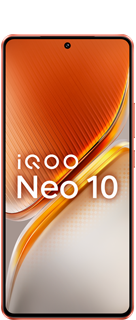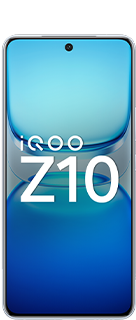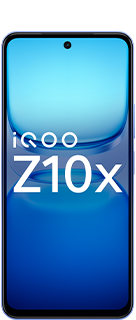EID MUBARAK 🫂❤️ TO EVERYONE

On 17 June 2024, Eid al-Adha will be celebrated. Eid al-Adha is also known as the “Festival of Sacrifice” It commemorates the willingness of Ibrahim to sacrifice his son Ishmael to Allah. According to the Holy Quran, Allah commanded Prophet Ibrahim for his son in his dream. Prophet Ibrahim do not hesitate to sacrifice his son to Allak. But Allah appreciated Ibrahim’s unshakable faith and loyalty and provided a lamb to sacrifice instead of his son as he was ready to offer his son. It is said that it is an Allah test for Prophet Ibrahim for his devotion and he passed in it. Since then, Muslims have sacrificed an animal to devote to Allah on the Eid-Al-Adha, which is also known as Bakra Eid. Muslims throughout the world commemorate this day as a symbol of their faith, loyalty, and obedience to God’s will. This day is deeply rooted in the heart of the Muslim community celebrate this day joyfully and spend time with their friends and family.
Significance of Eid ul-Adha
Eid ul-Adha holds immense significance in Islam. The festival is celebrated on the 10th day of Dhu al-Hijjah, the last month of the Islamic lunar calendar. In addition, it coincides with the culmination of Hajj, the annual pilgrimage to Mecca. Hajj holds a special place in the hearts of Muslim people. It is one of the five pillars of Islam. It is said that Hajj completion is a major spiritual event for Muslims worldwide. Eid ul-Adha is a day of Sacrifice. One of the key rituals of Eid ul-Adha is Qurbani, which means Sacrifice. People give Qurbani to animals like sheep, goats, cows and camels. In India, mainly goats are sacrificed on the day of Eid ul-Adha. Later, the meat of sacrificed animals is divided into three parts- one goes to the family, two to the friends and relatives and three to the poor and needy people. This act of distribution of animal meat highlights the importance of sharing and providing meals to less fortunate people.
Eid ul-Adha Rituals
On this auspicious day, Muslim people perform several rituals. Here are some of the rituals
Eid Prayer
On Eid ul-Adha, Muslim people start their day with the morning prayer in the mosque. This special prayer is known as Salat al-Eid. This prayer consists of two units (rakats) and is followed by a sermon (khutbah). A large number of people gathered in the mosque and open field which also represented the unity of the Muslim community.
Qurbani(Ritual Sacrifice)
As we already talk about it. Qurabi is the main act of Eid ul-Adha. The ritual slaughter of an animal such as a sheep, goat, cow, or camel. Later, they distribute meat to family, friends and needy people.
Charity (Zakat al-Fitr)
Alongside the Qurbani, Muslims were also involved in the charity on the day of Eid ul-Adha. It is a charity for the needy people. This act of giving is a key component of Eid ul-Adha. It represents the importance of helping others and fostering community well-being
Clothing and Social Gatherings
tradition to wear new or their best clothes on Eid. Mainly, they wear traditional attire like white kurta pyjama. Family organisations get together with their friends and families, where they share special meals with meat and exchange gifts. In addition, it is also a ritual to give money to the children by the elders. Different regions have unique traditions, but the common theme is one of joy, community, and sharing
Cultural Variations
The celebrations of Eid ul-Adha vary across different cultures. For example, in Sudan, the festivities include traditional dances and the preparation of special beverages. In Saudi Arabia, communal breakfasts and folk dances are common. In Palestine, despite political challenges, the spirit of Eid is maintained through family gatherings, special cookies, and acts of charity.
The importance of Eid al-Adha in the Muslim community:
Interconnection between members of the same family
Eid al-Adha increases communication and interdependence among family members. On this day, the family gets together to watch the sacrifice being slaughtered. Everyone then takes part in distributing the meat to the underprivileged, the needy, and nearby relatives. Dining tables are set up to commemorate this auspicious day.
Enhances social relationships
Eid al-Adha is a day to celebrate, be happy, and communicate with each other as a family. Families and friends frequently get together throughout the Eid holidays, and some even organise group excursions, all of which contribute to the development of stronger social ties within society.
Spreads happiness throughout people’s souls: People feel comforted and happy throughout the Eid holidays. They allow the person to obtain some physical and mental rest, which is why there are lots of recreational activities and get-togethers with friends and family. Children are the ones who are happiest during the Eid holidays.
Becoming closer to God Almighty
Muslims carry out one of the confirmed rituals of Islam on Eid al-Adha, which is the slaughter of livestock from the first day of the holiday until the last day of Tashreeq. This is done to commemorate the story of our master Abraham, peace be upon him, who wanted to kill his son Ishmael, peace be upon him, and to get closer to God Almighty.
Follow for More: @TESVIPER10
Please sign in
Login and share






















